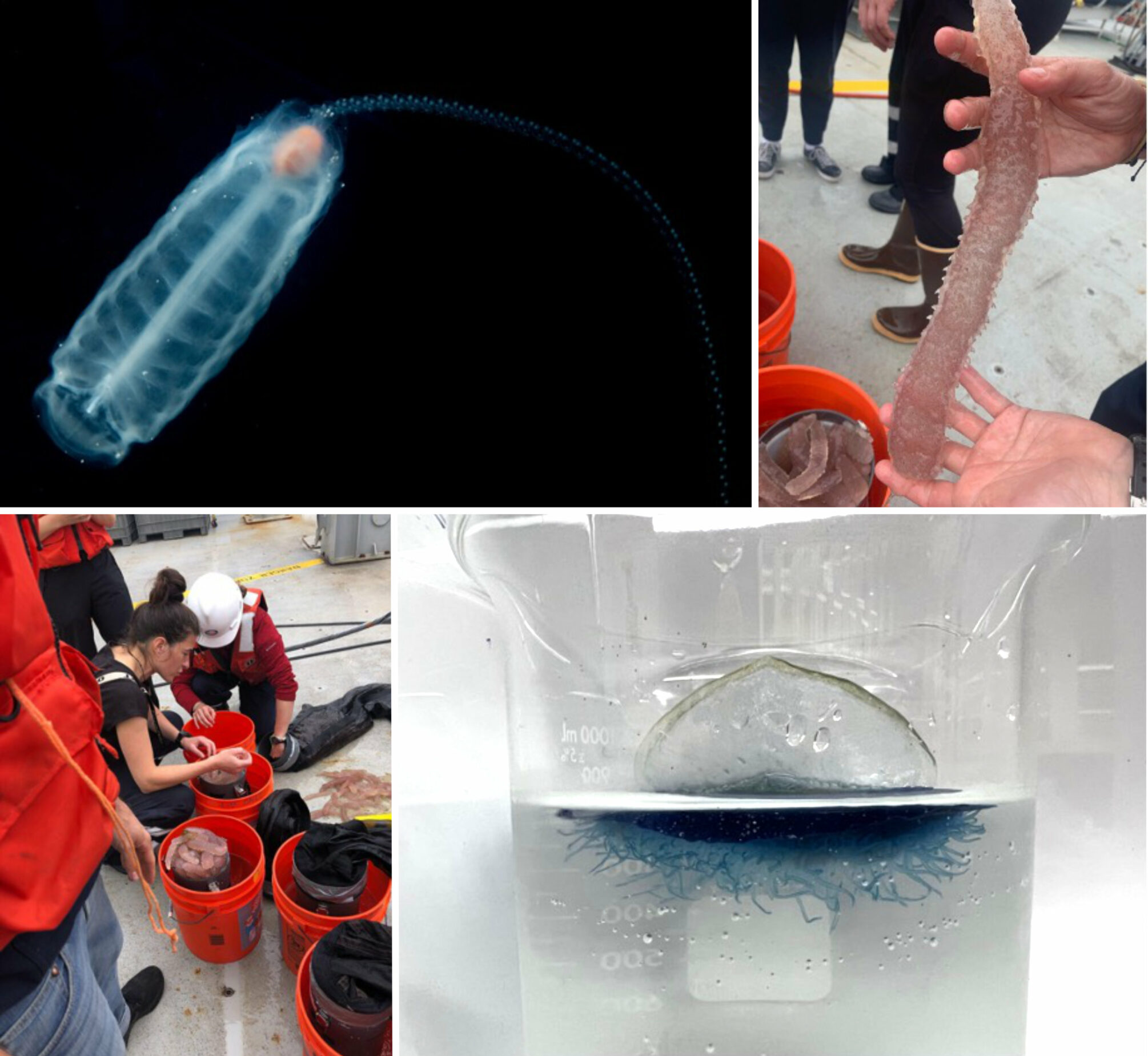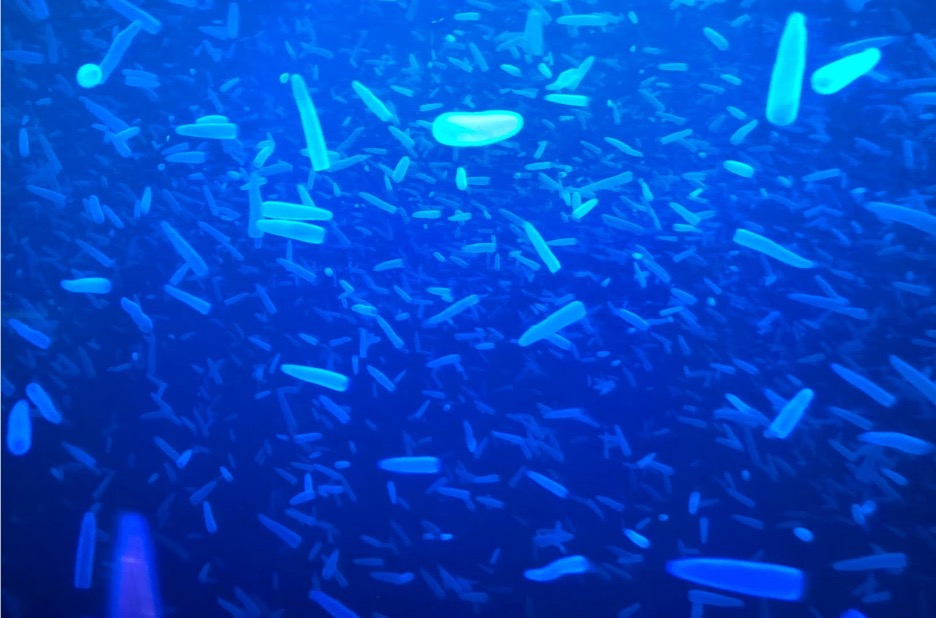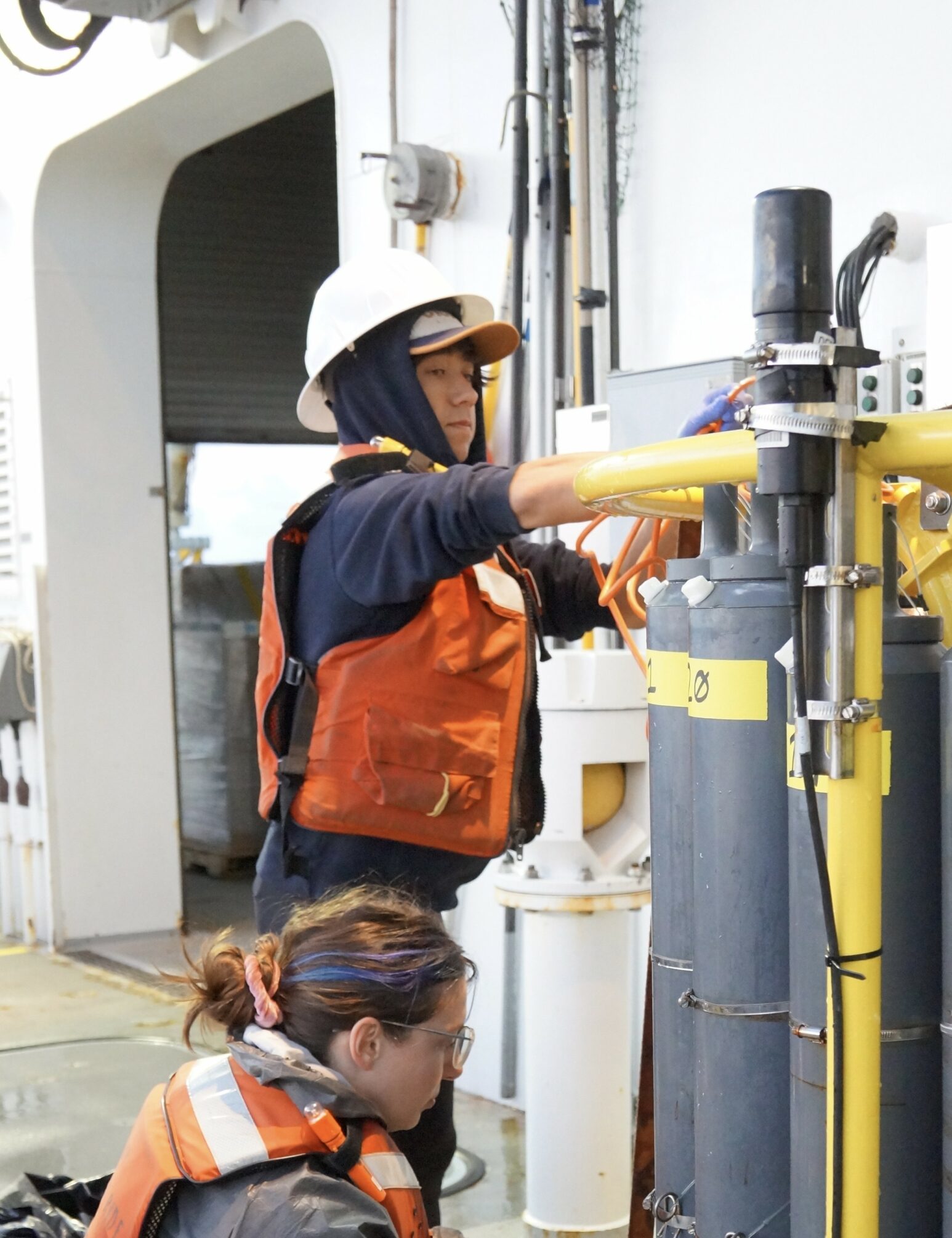
This post is part of the LTER’s Short Stories About Long-Term Research (SSALTER) Blog, a graduate student driven blog about research, life in the field, and more. For more information, including submission guidelines, see lternet.edu/SSALTER
by Dante Capone, graduate student at the Scripps Institute of Oceanography and the California Current Ecosystem LTER
While not many know plankton beyond the obsessively scheming green antagonist of Spongebob, most people can recognize jellyfish. Jellies are members of the plankton, specifically zooplankton-tiny animals that drift along with the ocean currents. From the alien appearance and mesmerizing, pulsating movement of scyphozoans (‘true jellies’), to the infamous sting of the Portuguese Man-o-war siphonophore, what most people know collectively as jellyfish are actually just a slice of the diverse group known as gelatinous zooplankton(sometimes called “Gelata”). Gelatinous zooplankton include members of the phylum Cnidaria (which includes corals and anemones), chordates (which are closely related to us), comb jellies, sea butterflies, arrow worms, as well as some types of polychaete and annelid worms. Most have translucent bodies made up of mostly water. When we pull them out of the ocean, they lose much of their elegance and can become challenging to identify or even damaged. As biological oceanographers, we collect these fascinating animals to answer globally impactful questions beyond the basic “how painful is its sting?”

Credit: Mike Stukel, Anya Stajner, & Dante Capone, CC BY-SA 4.0.
Why Gelata?
There are a multitude of reasons why gelatinous zooplankton pose an enticing scientific challenge. First, compared to the typical plankton we pull up in our nets which are often hardly visible with the naked eye, many gelatinous zooplankton are orders of magnitude bigger. This makes them stand out when looking into the collected sample. It’s like if you were sitting outside watching tiny sparrows or hummingbirds at your bird feeder when all of a sudden a giant pterodactyl landed to join the feast. This stark size discrepancy combined with the delicate nature of the gelata means our typical protocols of transferring the collected plankton onto small filters and measuring the mass often need to be adapted. Their size means that gelatinous zooplankton can contain more carbon, may consume different types of prey items, and may in turn be consumed by different predators. Each of these differences from the typical paradigm of crustacean plankton have resounding implications for the marine ecosystem. One famous example is that the poop of salps is so much larger than that of other plankton that blooms of these animals can significantly impact deep-sea carbon export and sequestration.
In the California Current Ecosystem (CCE) LTER, our time series of plankton net tows is punctuated by booming blooms of gelatnious zooplankton. Commonly blooming species include a host of unique characters such as salps, pyrosomes, and most recently the siphonophore known as Velella velella (Image 1,2,3). Salps and pyrosomes are both pelagic tunicates (chordates) who live in the water column and have complex life cycles, alternating between sexual and asexual phases. During asexual life stages, these gelatinous zooplankton form colonies of clones, which allows them to proliferate much faster than strictly sexual reproducing crustacean zooplankton such as krill or copepods.
Off to sea
Scientists in the CCE are currently piecing together the multitude of physical, biological and chemical factors that facilitate these shocking explosions of gelata. In the most recent CCE cruise during July 2021, we found ourselves immersed in a sea of the pyrosome Pyrosoma atlanticum, which rose to the surface at night in masses of long, pink bioluminescent colonies that often clogged the ship’s intake. Pyrosomes have been abundant across the CCE from the Oregon Coast down to San Diego since the historic marine heatwave known as ‘the Blob’ struck the US West Coast back in 2014-2015.

Credit: Lisa Levin, CC BY-SA 4.0.
We will be beginning Phase IV of the CCE-LTER program with a small pilot cruise in October, followed by a full 5 week cruise in February. Part of our next set of scientific inquiries involves exploring how extreme events such as marine heat waves impact the ecosystem. Collecting more gelata at sea, observing and testing what conditions allow them to thrive, and understanding their influence on the food web is crucial for anticipating future states of the CCE and warming ocean as a whole.

Hi everyone! My name is Dante Capone and I’m a PhD Student at Scripps Institution of Oceanography studying biological oceanography and a member of the California Current Ecosystem LTER site. My research in the Décima Lab examines environmental patterns of zooplankton diversity and the effects of wildfires on marine ecosystems. Outside of research I enjoy making ocean-inspired art, competitive running, and baking sourdough bread. Follow our lab instagram @decima.lab for plankton content!










